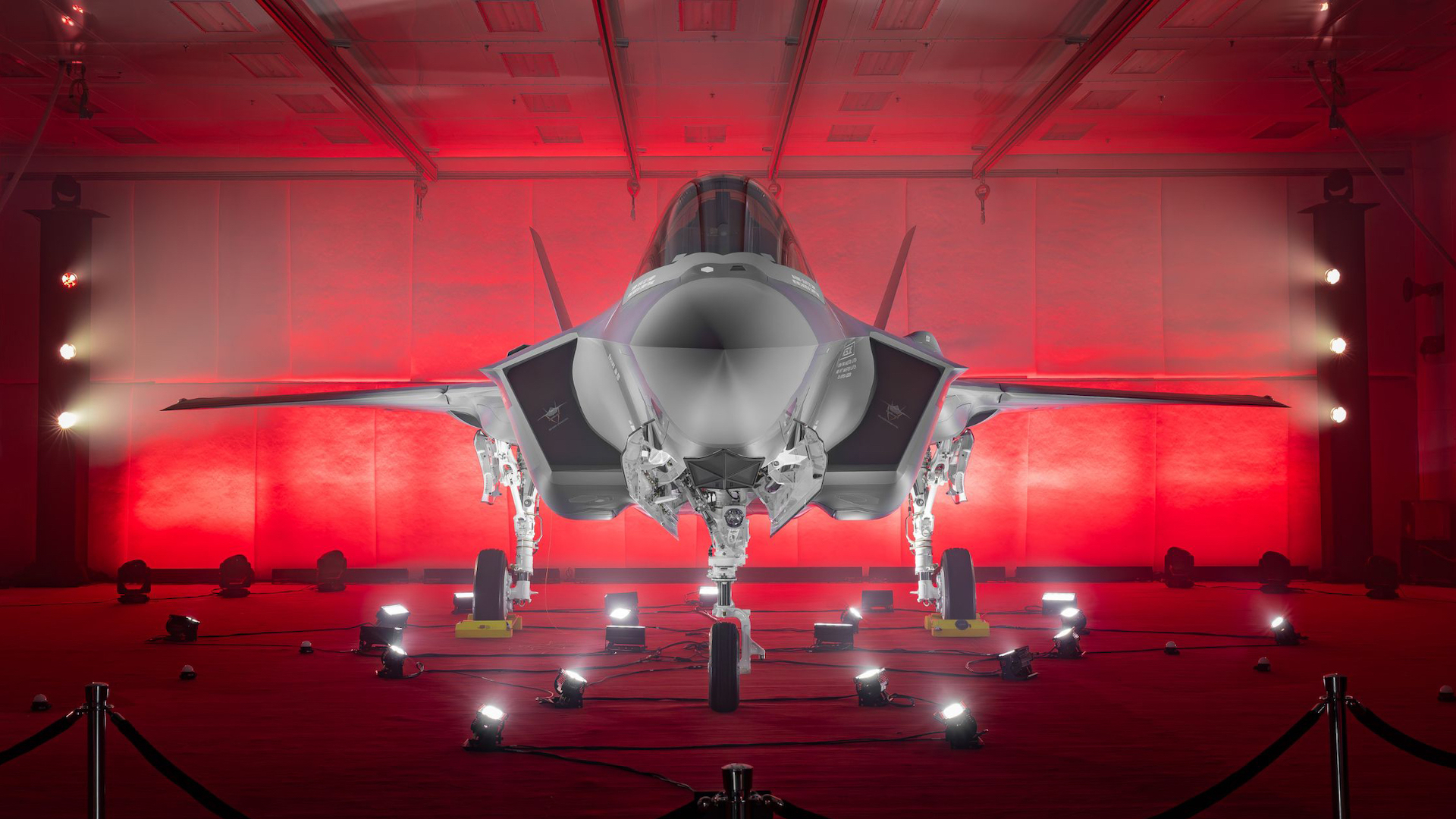Poland’s first F-35A stealth fighter — locally named Husarz, or Hussar — was officially rolled out today in a ceremony at Lockheed Martin’s Fort Worth, Texas plant. Playing on the warrior heritage of its Polish name, Lockheed Martin also put together a number of composite images that depict the Polish jet alongside one of its forebears — the historical Winged Hussars cavalry that was once considered the most elite branch of the country’s armed forces. The first aircraft, AZ-01, is planned to be delivered to the Polish Air Force in December.
With the need to replace Soviet-era MiG-29 Fulcrum and Su-22 Fitter combat aircraft becoming more urgent, Poland accelerated its program to acquire a new fighter — known as Harpia, or Harpy Eagle — in late 2018.
By spring the following year, it was confirmed that Poland was in talks with the United States with a view to buying conventional takeoff and landing (CTOL) F-35A variants.


On January 31, 2020, a contract to purchase 32 F-35As in Block 4 configuration — worth $4.6 billion — was signed. At the time, plans called for these to be delivered between 2024 and 2030, at a rate of four to six aircraft per year, although this may well be affected by the pause in deliveries for around a year, while a workaround was developed for the F-35’s vital Tech Refresh 3 software, or TR-3.
Russia’s full-scale invasion of Ukraine in February 2022 has reinforced the urgency of introducing the F-35 and bringing it up to initial operational capability. The changing security situation means that Poland’s F-35s could possibly be armed with B61-12 thermonuclear bombs in the future, as Warsaw increasingly looks to field a nuclear deterrent capability, as you can read about here.
Construction of Poland’s first F-35, AZ-01, began with the fabrication of a portion of the wing assembly at Lockheed Martin’s F-35 center wing assembly line in Marietta, Georgia, in spring 2023. In April of the same month, the company released a video confirming that the jet was standing with weight on its wheels for the first time at the final assembly plant in Fort Worth.
The first six Polish F-35s are set to remain at Ebbing Air National Guard Base, Arkansas, at least to begin with, to kickstart the training of pilots and maintainers.
A first group of 14 Polish F-16C/D pilots have already begun training on the F-35A in the United States, while others — including MiG-29 pilots — have spent time there on F-35 full-mission simulators. This first cadre will become instructors to train the next generation of Polish F-35 pilots.

While F-16 pilots have initially been prioritized for F-35 conversions, it’s possible that Polish MiG-29 and perhaps even Su-22 pilots will also be trained on the stealth fighter. While the process of conversion will be harder, this would have the advantage of ensuring that the F-16 force doesn’t lose as many experienced aviators.
Ultimately, Poland plans to conduct F-35 training on its home soil, but this will take some time, with 24 pilots and 90 technicians planned to be trained in the United States. In the meantime, an initial batch of aircraft will be delivered to Poland to form the first operational squadron, to be based at Łask, around 2025-26. This unit is planned to achieve full operational capability in around 2030.
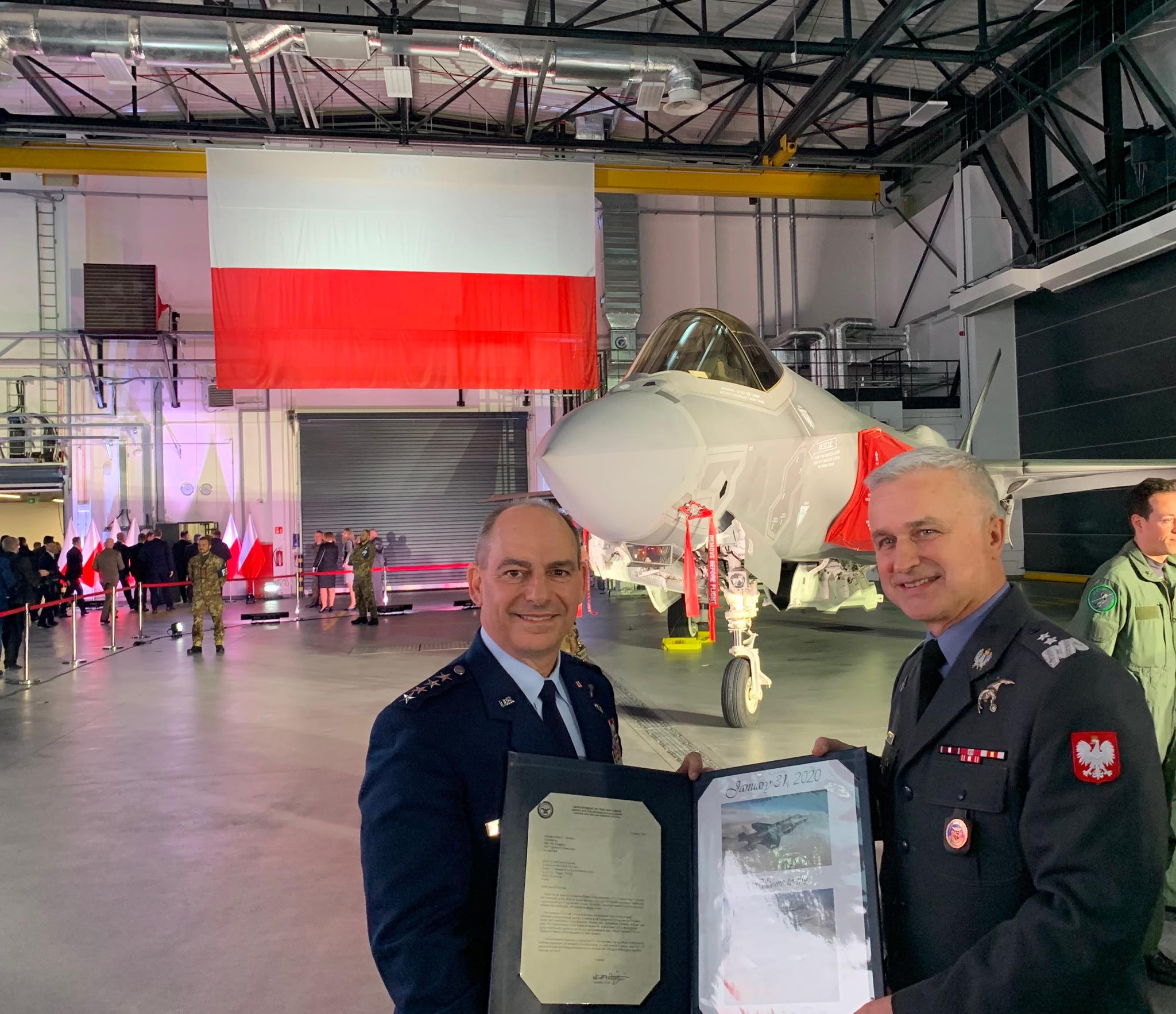
The second operating location for the F-35 will likely be Swidwin, currently home to Poland’s last squadron of Su-22s.
According to Lockheed, Poland’s fleet of F-35 fighters will be equipped with TR-3 and, at least eventually, Block 4 capabilities. TR-3 constitutes the F-35’s ‘computer backbone’; a set of hardware and software changes that effectively underpin the F-35’s future capabilities, known collectively as Block 4. The development and testing of TR-3 has proved to be far from straightforward, as you can read about here.
Aside from the forthcoming F-35, the Polish Air Force operates an unusually diverse combat aircraft fleet, at least for a modern NATO air arm. Its equipment comprises a mix of U.S.-supplied fighters, and Soviet-era equipment, now modernized, while South Korea-made FA-50 light combat aircraft are the latest addition to the inventory.
Pending the arrival of the F-35, Poland’s most important combat aircraft is the Lockheed Martin F-16C/D Block 52+, known locally as the Jastrzab, or Hawk, of which 48 examples (36 single-seat F-16Cs and 12 two-seat F-16Ds) were acquired. These serve with three squadrons, two of them based in Poznan-Krzesiny and one at Łask.

Poland has already begun looking at a possible upgrade for its F-16s, to keep them highly viable until the F-35s become fully operationally capable and to fight alongside those jets after.
Any future modernization of the Polish F-16s is likely to be broadly along the lines of the F-16V upgrade, including the AN/APG-83 Scalable Agile Beam Radar (SABR), as well as new electronic warfare systems and onboard computers.
Prior to the war in Ukraine, the Polish Air Force operated a fleet of 28 MiG-29 Fulcrum fighters, which were operated by two squadrons at Minsk Mazowiecki and at Malbork.
Poland’s first MiG-29s entered service in 1989-90 and were provided directly from the Soviet Union, while the force was boosted after the Cold War by transfers of secondhand aircraft from the Czech Republic and Germany, as you can read about here.
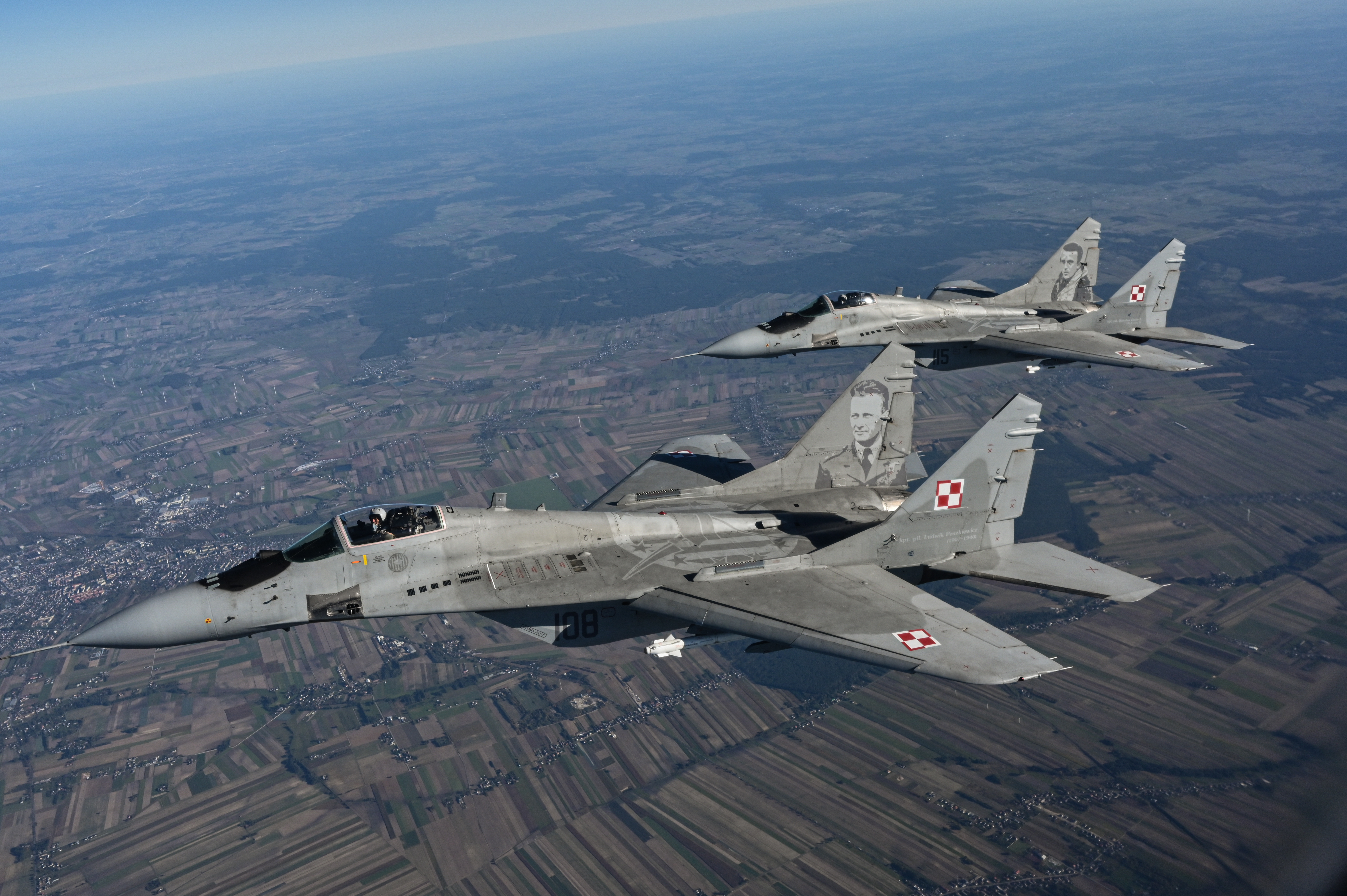
While the fleet has suffered from high-profile attrition in recent years, modernization means that the MiG-29s have had their service life prolonged until 2028.
However, in response to Kyiv’s urgent request for additional fighters, Poland transferred 14 MiG-29s — all of them former German Fulcrums — to Ukraine in the first half of 2023. This halving of the Polish MiG-29 fleet leaves 14 examples operational at Malbork, where they are expected to remain in service until 2027.
Poland’s veteran Su-22 Fitter swing-wing ground-attack/strike aircraft entered service in 1984 and are now scheduled for withdrawal next year. These aircraft — single-seat Su-22M4 Fitter-K and two-seat Su-22UM3K Fitter-G models — have also been modernized and in recent years have primarily been used for training.
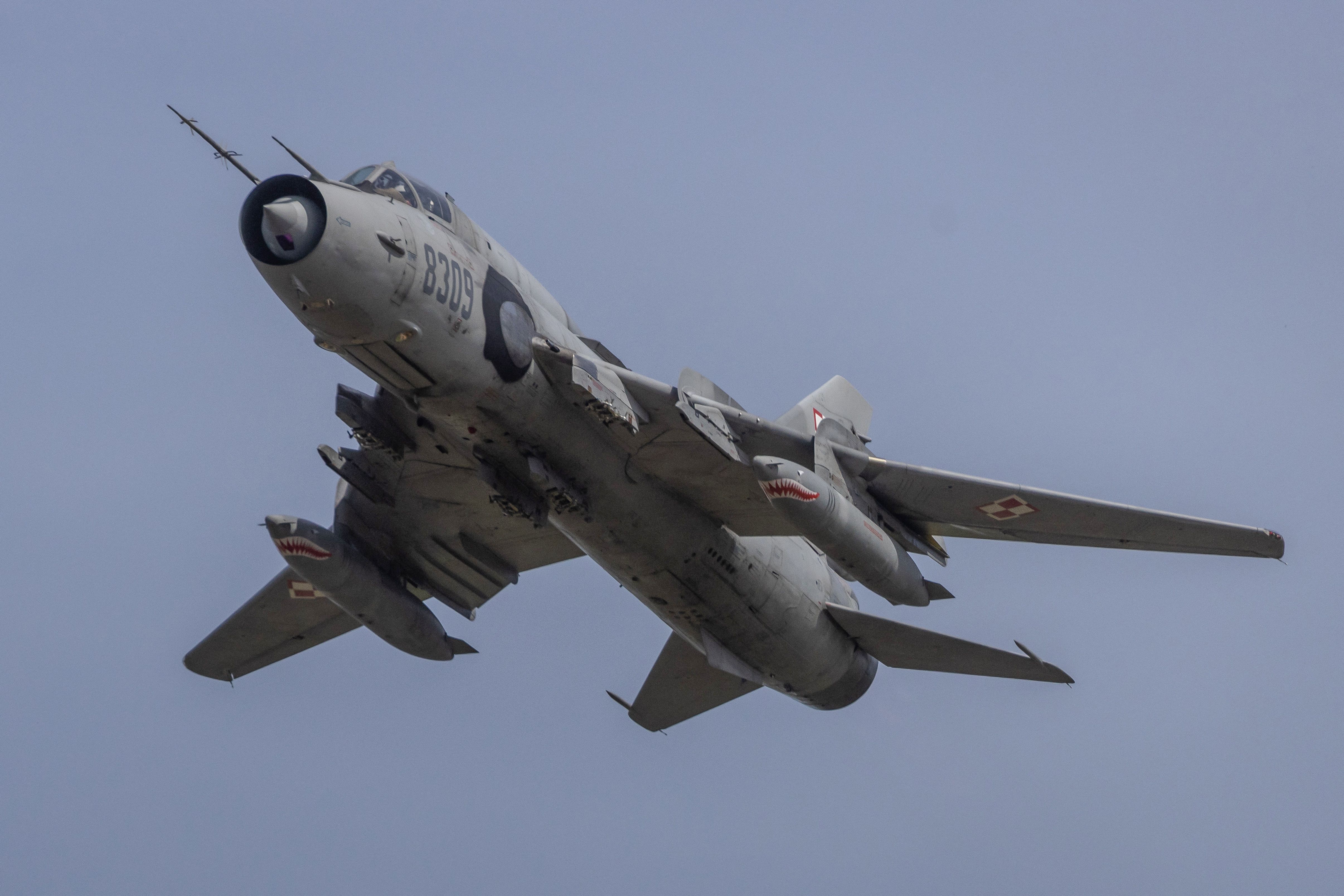
The latest addition to the Polish Air Force’s combat fleet is the FA-50, from Korea Aerospace Industries (KAI). An agreement to buy 48 examples of the light combat aircraft was signed in July 2023, as part of a much larger arms transfer from South Korea to Poland. The jets are being rapidly delivered to offset the transfer of MiG-29s to Ukraine and the pending retirement of the Su-22.
The first 12 Polish FA-50PL aircraft, in Block 10 standard, were delivered to Poland in mid-2023. The next batch of 36 aircraft will be in the more advanced Block 20 configuration, including active electronically scanned array (AESA) radar, Sniper targeting pod, Link 16 datalink, and AIM-9X Sidewinder missiles. Deliveries of the Block 20 aircraft are due to begin next year.
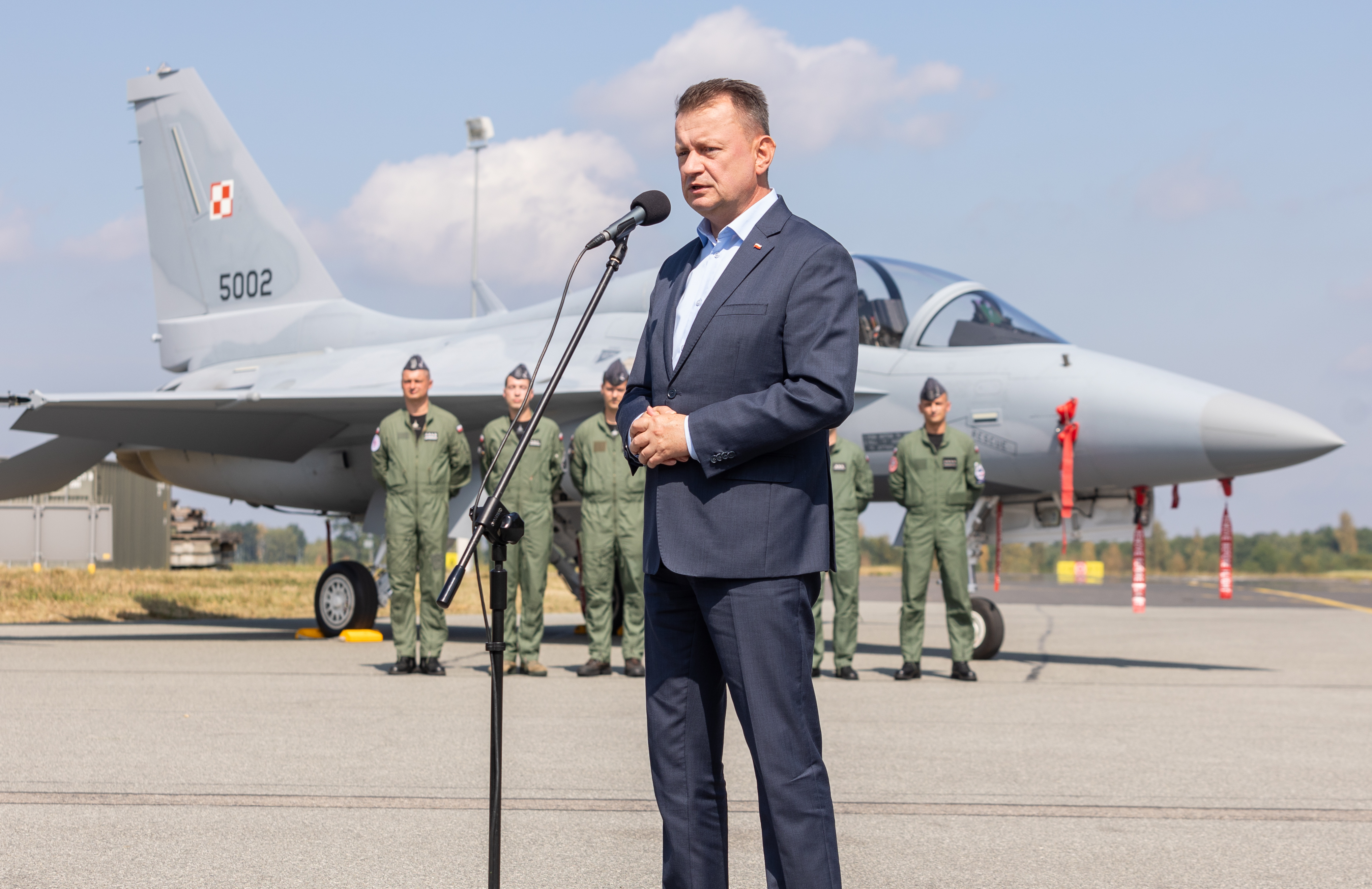
All in all, Poland’s increasingly powerful air force reflects the country’s defense-spending spree, as fears of Russian aggression grow in the wake of the all-out invasion of Ukraine. With Poland spending 4.23 percent of its GDP on its armed forces, more than double the NATO target of two percent, the forthcoming F-35 fleet will be one of the most potent — and capable — symbols of the country’s rapid military modernization.
Contact the author: thomas@thewarzone.com
